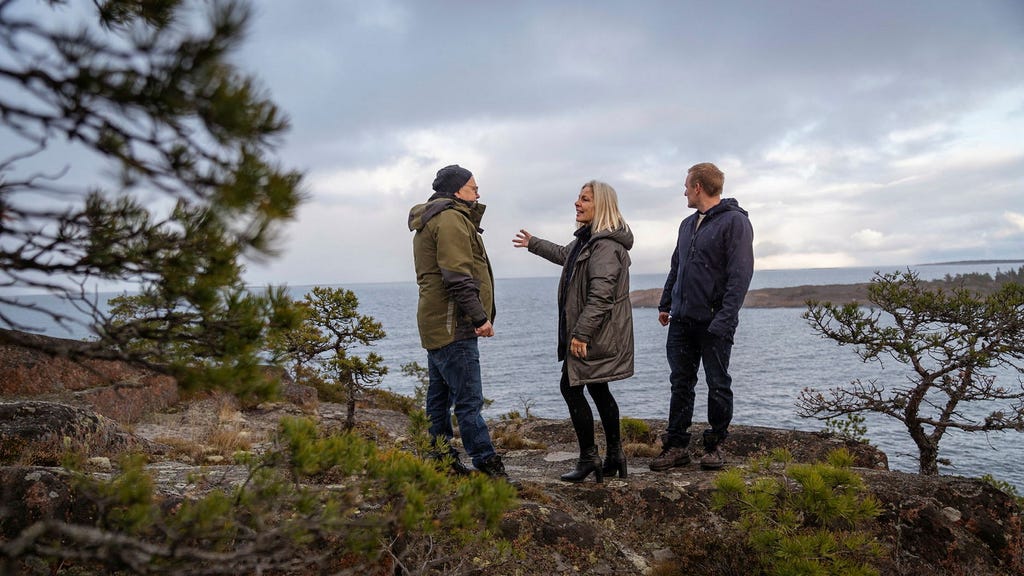The frigid winds of late autumn sweep across the barren islets of northern Åland, a self-governing archipelago nestled between Sweden and Finland. A lone sea eagle soars above, the first snowflakes of the season drifting down. This serene landscape is the proposed site of Sunnanvind, an offshore wind farm projected to be one of the largest in the world. The sheer scale of the project, however, remains a point of contention, with estimates ranging from 200 to 300 wind turbines spread across an area comparable to the size of the Swedish island of Öland.
Initially conceived by the previous Åland government, Sunnanvind identified two potential locations, one north and one south of the archipelago. The southern location was vetoed by the Finnish defense forces, leaving the northern area as the sole option. Camilla Gunell, Minister of Infrastructure for the Åland government, champions the project, citing both its climate benefits and its potential to revitalize the Åland economy. While Åland enjoys demilitarized status, defense-related matters fall under the jurisdiction of Helsinki. Gunell envisions the project generating a substantial new revenue stream for municipalities and the Åland government through taxes and lease fees, fostering new educational opportunities, employment, and business prospects.
The projected energy output of Sunnanvind, estimated at 20 terawatt-hours annually – nearly equivalent to the 2023 output of Sweden’s Forsmark nuclear power plant – far surpasses the energy needs of Åland’s 30,000 residents. Gunell highlights the archipelago’s strategic location between southern Finland and Sweden’s Mälardalen region as conducive to exporting the surplus energy. However, the project faces fervent opposition from the Norrhavets vänner (Friends of the North Sea), a local group determined to protect the pristine beauty of the region. They contend that the wind farm will transform a natural gem, designated as such by the Finnish Association for Nature Conservation, into an industrial eyesore.
The Norrhavets vänner voice a multitude of concerns, ranging from the impact on seabirds, fish populations, and water quality, to the potential disruption of tourism and the risk of disturbing radioactive sediment from the Chernobyl disaster currently resting on the seabed. They also express skepticism regarding the project’s economic viability, arguing that profits are primarily concentrated in the planning and construction phases, with little long-term financial benefit once the turbines are operational. Security concerns are also paramount, particularly given the project’s scale and proximity to both Finland and Sweden. Lena Laitinen, chair of the Norrhavets vänner, raises the specter of foreign ownership, potentially by Chinese or Russian entities, effectively turning the wind turbines into surveillance towers. Daniel Mattsson, another member of the group, underscores the risk of sabotage, given the potential for the wind farm to become a high-profile target in the Baltic Sea.
Gunell counters these concerns by framing Sunnanvind within the broader context of European energy security. She points to the Marienborg Declaration, signed in August 2022 by eight Baltic Sea nations, which commits these countries to expanding offshore wind power to reduce reliance on Russian fossil fuels. Gunell envisions the Baltic Sea becoming a new energy hub for Europe, mirroring the role of the Persian Gulf states, supplying not only electricity but also green hydrogen. She acknowledges the security concerns raised regarding offshore wind farms, referencing the Swedish government’s recent rejection of 13 wind farm projects in the Baltic Sea due to potential interference with defense capabilities, mirroring the Finnish defense forces’ objection to the southern Åland location for Sunnanvind. Gunell suggests that Denmark, a long-standing NATO member with extensive experience in offshore wind power, could offer a model for balancing security and renewable energy development.
Within Åland itself, opinions are divided. While some municipalities anticipate significant financial benefits from the project, others, like Geta resident Anders Jansson, express skepticism, arguing that the project’s scale far exceeds Åland’s needs. Jansson believes the proponents have overstated the potential financial gains, and that the pragmatic Åland population remains unconvinced. Daniel Mattsson concurs, questioning the rush to embrace such a large-scale project in a rapidly evolving industry. He suggests a more cautious approach, allowing larger entities to pilot such projects before committing Åland to a potentially risky venture. The debate over Sunnanvind continues, highlighting the complex balancing act between economic opportunity, environmental protection, and national security in a region increasingly focused on renewable energy and geopolitical stability.














